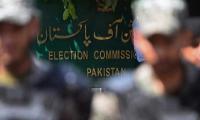Education, as we know, is the single most critical path to socioeconomic mobility. In instrumental terms, a robust education system is not just a pathway for greater socioeconomic mobility at an individual level. It is also the building block for a more equal (or less unequal, at the very least) society that affords adequate channels for greater social and economic wellbeing.
However, we do not see the linearity play out neatly in the real world. There is little to disagree with the conclusion that education is central to individual and collective progress. For this to hold true though, disadvantaged groups in society ought to have equal access to quality education that paves the way for mobility leading to less inequality.
Access to education is determined by a range of factors including one’s social identity. Stereotype threat is a subject that has been researched and documented extensively in behavioral economics, sociology and psychology literature around the world. It is a condition where people belonging to a disadvantaged group perceive themselves to be at the risk of confirming stereotypes about their group.
The evidence of stereotype threat on academic outcomes has been documented in various studies and experiments. One such experiment and its findings were documented in a fascinating book by Claude Steele, titled 'Whistling Vivaldi'. It explored the effect of racial identity on SAT scores of African-American and Caucasian candidates. The results showed that SAT scores reduced by around 50 percent when African-American candidates were made to fill out a demographic form before taking the test. As opposed to just the expectation of prejudicial human action concerning the scores, Steele attributes the difference in test scores to social generalizations, and stereotypical assumptions associated with different identities, which determine behavioural patterns, reinforcing unequal trajectories.
A similar experiment was carried out by Priyanka Pandey to map the effects of caste identity on test performance in Uttar Pardesh, India. The results showed that caste identity had no significant effect on test scores when the caste was not announced publicly. However, when the caste of the candidate was announced before the test, there was a significant decrease in the test scores of low-caste candidates. Both experiments show compelling evidence to suggest that historical conditions of inequality lead to expectations of prejudicial treatment and behaviors that reproduce inequality.
Theoretical work on equity in Pakistan has largely focused on obvious fault lines including economic status, geographic location, ethnicity and gender. Barring notable exceptions, caste-based inequality resulting in varying levels of educational access has not been studied in enough detail in Pakistan. However, a few robust researches provide invaluable insights for education managers and policy practitioners. One such work was carried out by Ghazala Mansuri and Hanan Jacoby, titled 'Crossing Boundaries – Gender, Caste and Schooling in Rural Pakistan'. It explores the dimension of education choice by analyzing costs in the form of social barriers arising from communal heterogeneity.
The findings of the study confirm that social costs stem from caste differentiation in which a low-status group is subject to discrimination from a high-status group. Owing to negative social costs resulting from caste differentiation, it is more expensive for a low-caste household to send their child to a high-caste dominated school than a caste concordant school. In the absence of social costs, low-caste children are no less likely to enroll in schools than high-caste children. One way of reducing such social costs would be to enable access to caste concordant schools to low-caste children. Attending schools located in low-caste settlements can address the issue of access resulting from social costs for the disadvantaged low-caste children.
Empirical researches on the link between social identity and educational access from around the world provide multiple lessons for policymakers and practitioners.
Education practitioners and activists have been involved in a robust push calling for equalizing basic public education. Despite admirable work, the question of equity is often construed within limited frameworks. It is important to acknowledge that inequality of educational opportunity is a result of various factors layered together. They include apparent ones like economic status, gender, ethnicity, religion as well as relatively obscure aspects that cannot be observed without adequate field exposure.
Policy discourse around subjects as nuanced as equity in education need to be rooted in empirical research as opposed to conventional wisdoms. In addition to traditional inputs to the system like teachers, buildings, books etc, the educational experience is rooted in the perception of one’s social identity vis-a-vis other groups. Addressing equity challenges driven by perceptions of social identity lies at the confluence of sociology, politics, economics and psychology. It is hence critical to view the education system as part of an overarching social context. Assigning a technically exclusive and impermeable domain to the education policy discourse precludes critical analyses that help identify contextual specificities which are critical to accurate diagnosis of equity issues and requisite course correction.
The writer is an education researchercurrently based in Lahore.
A health worker administers polio vaccine drops to a child during a door-to-door polio vaccination campaign in Lahore,...
Armed militants of the banned Tehreek-e-Taliban Pakistan pose for a photograph in Orakzai Agency. —...
An aeroplane of the national flag carrier of Pakistan is seen in this file photo. — AFPWhile Pakistan considers...
Representational image of a graph depicting various variables. — APP/FileInitiated by the centre and fiercely...
In this picture taken on April 16, 2023, people throng a market area during shopping in Lahore. — AFPOne of the...
Honour crimes also target men. In Sikandar Ali Lashari vs The State, SHC upheld conviction passed by ATC for honour...







